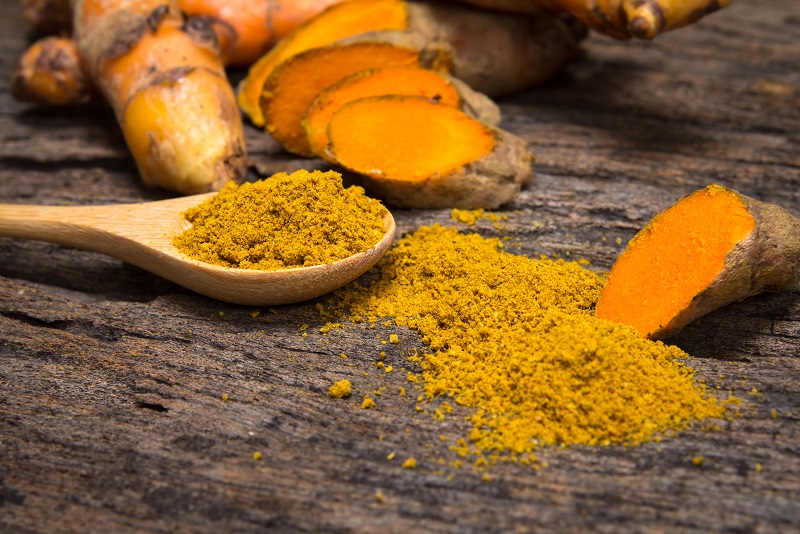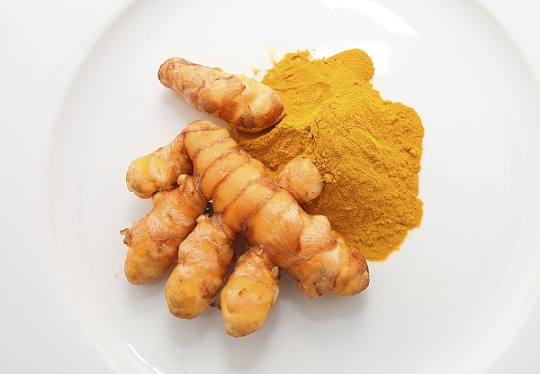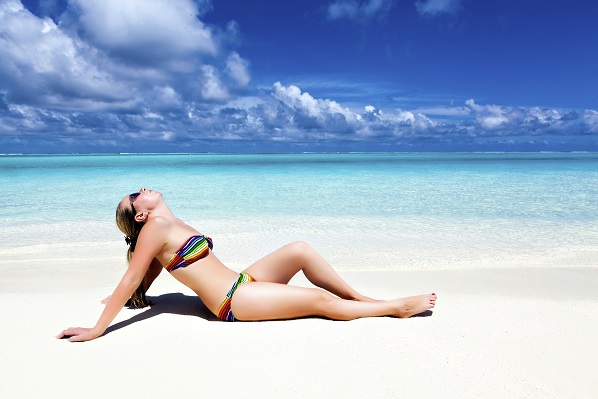
It’s often assumed by acne-clearing enthusiasts that any nutritious superfood will automatically work wonders when applied topically, but in many cases that belief is a fatal mistake.
Take olive oil, for example. It’s a heart protecting superstar, and for acne, it provides gallons of vitamin E while lowering inflammation using its special compound oleocanthal. Olive oil is an excellent food for acne, yet topically, it can destroy your skin barrier and weaken your resistance to UV radiation. Its mainly due to one fatty acid with a double life, oleic acid, which forms 70% of olive oil’s fats.
Grapeseed oil, meanwhile, is the exact opposite. Its dominant fat linoleic acid (69%) soothes the skin and strengthens ceramide proteins when applied topically (get the hidden knowledge here), yet when eaten, it fuels the fires of inflammation, providing the raw materials for immune system chemicals.
Then there’s the fruits and vegetables which are all round great. Pomegranate is full of rare antioxidants like punicalagin and has an ORAC score of 10500, and this doesn’t backfire when applied to the skin. One study found that topical pomegranate pushed back against p.acnes bacteria colonies.
That said, never blindly assume that any nutritious food will automatically treat acne when applied topically, it could be your downfall…
…which brings us to the turmeric, the popular Indian spice. This gold-coloured powder made from the rhizome of the turmeric root is excellent at reducing inflammation due to the compound curcumin, which is now a booming supplement. Yet as a topical treatment it’s far more controversial. Some people have experienced miracles while other people’s skin is lying in ruins. Some dismiss turmeric outright as being Ayurvedic voodoo medicine.
Hence, we have today’s article, which will clear up the confusion once and for all.
A secret oily skin miracle?
The first piece of evidence to put the doubters to bed is this study testing turmeric on acne directly. This is a relatively recent study dating back to 2013, whereas turmeric’s history in Ayurvedic medicine dates back to the BC days.
The goal – to test the effect of turmeric on sebum (oil) secretion in human volunteers.
The methods – the scientists prepared two creams. One contained a 5% concentration of turmeric rhizome extract, plenty of turmeric power to be getting on with. The second was a control, which they claimed was extremely similar except for the fact that it contained no turmeric (so in other words, not similar at all).
Both formulations were tested on 13 human volunteers for 3 months. Their sebum was tested at baseline, and then every two weeks.
The results – the results were truly shocking. Due to the oily nature of the cream, the control cream caused a 6.2% increase in the skin’s oil after 13 weeks, with increases becoming noticeable at 6 weeks. The turmeric group, meanwhile, enjoyed a significant decrease in oily skin from week 4 onwards, and this culminated in a 24.76% reduction in sebum production after 13 weeks.
The conclusion said it all: “extract obtained from the rhizomes of turmeric plant can be used in skin preparations to regulate excessive sebum secretion in persons suffering from acne”.
The scientists seemed unsure of the exact causes and didn’t offer much in the way of juicy details in the discussion section. However, they did mention that two of turmeric’s natural compounds, beta-sitosterol and stigmasterol, have potent anti-androgen effects in humans. The androgen DHT is the most notorious hormone for stimulating sebum production alongside insulin.
Read Annihilate Your Acne – learn how to clear your skin permanently
Also, a truly great piece of news was hidden in there – no colour change whatsoever. Nobody gained the skin tone of Homer Simpson, and despite being only a single study, it did last for a lengthy 13 weeks.
What’s interesting is that turmeric’s biggest benefits when consumed are completely unrelated to oily skin. The main superstar is its rare anti-inflammatory compounds curcumin, and various structurally related curcuminoids with antioxidant properties.
Turmeric one – doubters nil.
Exceptionally rich in antioxidants
Next we have the oral benefits of turmeric which are very likely to translate to topical, the first being the bountiful supply of antioxidants.
To summarise, turmeric powder has one of the highest antioxidant counts of any food in existence. Its ORAC score of 127,096 thrashes fruits like berries and pomegranates.
Curcumin is one of the biggest antioxidant beasts, although some of its effects are indirect, such as increasing the body’s self-manufactured antioxidant glutathione by 16-80%. However, others have potent antioxidant powers themselves, including turmerone, ar-turmerone and numerous polyphenols. This study and this study found that turmeric protected against acne-causing lipid peroxides (essentially fat-based free radicals), a power which is likely to translate when applied topically.
The reason for turmeric’s extraordinary antioxidant density is the manufacturing process, where the turmeric plant’s root is roasted for lengthy periods in an oven, which evaporates all moisture and leaves the remaining powder highly concentrated. You don’t need to waste time with science as you can detect the antioxidants using your own tongue; the strong woody flavour is a sure sign of their presence.
Recommended – 6 vitamins and minerals which could finally clear your acne
As for inflammation, curcumin is again the strongest compound, calming arthritis and wiping out the brain inflammation behind dementia. It’s not confirmed that these powers will translate to topical turmeric, as it might only constrain the immune system from within the body…
…but plenty of the classic anti-inflammatory compounds do work just as well topically, such as ECGC in green tea. Plus, curcumin is is reported to affect over 700 genes in the human body, comparing respectably to vitamin D‘s 2000. Its mechanism of action is clearly broad. Curcumin makes up 3-6% of turmeric by weight, and it’s the main compound used in supplemental forms. Not to mention that turmeric is a widely used topical ointment in India for treating inflammation.
There’s also a topical power which turmeric probably doesn’t have inside the body – killing acne bacteria (unless it secretly diffuses through skin pores). This study found that curcumin had antibacterial activities against propionibacterium acnes 36 times stronger than azelaic acid, which is one of the pride and joys of commercial skincare.
Since the study was in vitro, the benefits aren’t proven on a living human. P.acnes living on human skin may be harder to dislodge, curcumin might not absorb properly – anything is possible. But this is still fantastic evidence. Depending on the concentration, curcumin reduced the growth of p.acnes bacteria by between 50% and 96%.
In short, the anti-inflammatory powers are likely to translate to topical turmeric, the antioxidants are highly likely, and the antibacterial powers are a whisker short of confirmed.
Turmeric two – doubters nil.
The downfall of turmeric… or is it?
The benefits of turmeric we’ve covered so far would be highly respectable if they were unaccompanied by any downsides, but as it is, turmeric has just one significant controversy (aside from turning yellow) – sunlight sensitivity. This fear was demonstrated in a 2007 study where combining curcumin with UVB radiation led to massively increased apoptosis (programmed cell death) compared to UVB alone.
The scientists lauded this for its promise in reducing cancer, but for acne patients who want clear skin while still surfing, walking, or swimming in summer to their heart’s content, it would be a potential death knell. Skin which is weaker against UV radiation is more likely to irritate and redden in sunlight, and the rays are more likely to trigger armies of free radicals.
If true, this danger would be enough to outlaw topical turmeric completely, but thankfully, other evidence says the opposite.
This 2015 study for example, tested 50 people aged between 21 and 67 (9 women and 21 men), giving them a turmeric paste converted from raw turmeric powder. The scientists tested the all-important minimal erythemal dose (MED), the lowest concentration at which UV rays start to irritate human skin cells.
Read this article and learn why vitamin A is great for oily skin
Great news – turmeric increased the MED in 83.33% of people, with 13.34% experiencing decreases. The scientists were dissatisfied and concluded that “turmeric as available does not offer significant photoprotection” but that’s irrelevant – what’s important is that we’ve discredited the old fears.
Curcumin is only one compound, and as the studies show, it’s almost certain that whole complete turmeric acts differently. Other antioxidant and phytonutrients are almost certainly cancelling out the dangers.
The second study shows that dangers are occasionally possible, and scouring the internet, several testimonials support that stance:
- “Be cautious using turmeric, I had a strong allergic reaction”.
- “I am observing several new painful zits popping out of my skin”.
- “Turmeric only worked well for the first few days”.
But there’s just as many positive testimonials:
- “Turmeric reduces redness and I have noticed my acne go away somewhat.”
- “I used to get inflamed acne all over my face, but now I only get the occasional small ones”.
- “No new pimples and the old ones are shrinking and healing fast”.
None of the complainant mentioned sunlight, so the outbreaks could have been standard allergic reactions. The dangers are nowhere close to lemon juice with its photosensitising furocoumarins (avoid). That said, reactions are clearly more common than with time tested remedies like aloe vera, meaning that overall, this is a minor chink in turmeric’s armour.
Turmeric 2½ – doubters ½.
Can turmeric erase your old acne scars?
Among acne patients, this is another area where turmeric has acquired a stellar reputation. Doubters argue that turmeric merely reduces the appearance of old acne marks and that it’s all a smoke screen.
Supposedly, anyone who has evened out their skin tone using a turmeric mask has achieved nothing but dying their skin yellow. There’s only been a superficial improvement, and once it comes off in the wash, you’ll wake up and realise that you’re back to square one.
Could this tale be true? Absolutely not. The yellowing is not guaranteed, you’re not doomed to look like a rubber duck, and turmeric does have wound healing properties.
Firstly, we have a 1999 study on wound healing in 96 albino rats. Turmeric absolutely thrashed the placebo and even coconut oil; its effects on small wounds inflicted on the rats was “significant” while the other two could only scrape to insignificant.
7 natural topical treatments which can massively reduce acne
Next up is a 2005 study on rabbits where turmeric defeated honey for wound healing. That’s a surprising result given that raw honey has been rubbed in for wound healing since the ancient times of the Roman empire.
Instead of whole turmeric, this 2011 study analysed isolated curcumin. It was found to be equally as effective as silver sulfadiazine, the standard pharmaceutical drug for treating burn wounds. Our final study (2012) also tested curcumin and revealed all sorts of fascinating results. Curcumin increased wound healing rates, the quality of wound healing, collagen laydown, and soft tissue formation. Increasing collagen is particularly interesting given that it’s the king of all acne proteins.
Because none of these studies are directly on acne, the benefits aren’t quite proven. Hence, the scoreboard now reads…
Turmeric 3 – doubters ½.
The final verdict
The science has spoken – topical turmeric is a pretty good topical acne treatment.
I wouldn’t put it in the same league as raw honey since the 24.8% reduction in oily skin took 3 months, and the risk of an allergic reaction is higher than other topical treatments judging by the many testimonials.
There’s also the practical problem that turmeric is a powder and must be mixed with a carrier like grapeseed oil or yoghurt, or converted into a paste which is left on the face for hours. If patience is a strange word to you, then other plants and oils are far superior.
Then there’s the small risk of yellow skin; the stains don’t always show up and they can be washed off with water, but the yellowness gets reported on by frustrated acne patients. If you eat too much turmeric, then your sweat can turn yellow, which can stain your bedsheets and clothes. Unless you actually want to become a yellow human, then that’s another minor downside.
Overall, however, turmeric escapes the deadly curse of olive oil. It’s almost as great as a topical remedy than as a food.
NEXT: forget creams and moisturisers – discover the ultimate acne-clearing diet
Thanks for reading!


